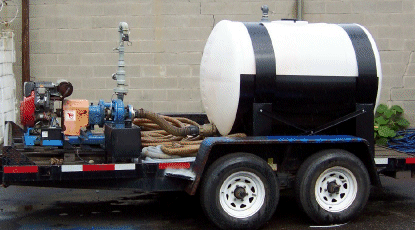In the past, we’ve talked with our customers about the importance of cleaning your heat exchangers and cooling towers. Now, Virginia Heat Transfer is pleased to offer cleaning-in-place service for plate heat exchangers, shell and tube heat exchangers, and chillers.
Cleaning-in-place (CIP) has long been used as an effective cleaning method for heat exchangers. It’s a very effective way to remove mineral scale and biological build up from inside heat exchangers in a short period of time (most cleanings can be completed in eight hours). As we’ve looked at our customer’s heat exchangers over the years, there are times when mechanical cleaning has worked just fine for some exchangers. Typically, we’ve performed this service in conjunction with a cooling tower cleaning that we performed on site. However, we continue to see situations where even after a physical cleaning, mineral scale can remain on the heat transfer surfaces providing a substantial resistance to heat transfer.

We’re pleased to now offer CIP cleaning to all of our customers for heat exchangers and chillers. This cleaning-in-place procedure is one way of bringing factory reconditioning quality on site, closer to our customers to minimize downtime. Consider this example. If you have a heat exchanger running a nominal 400 GPM of water with a design cool down in temperature from 110 to 80°F, and you’ve lost 5°F of your cool down, you’re losing 1,000,000 MBtu of cooling every single hour. Fouling could easily cause such a drop off in performance without routine cleaning.
The process of cleaning a heat exchanger or chiller in place is relatively easy. After an initial discussion, we’ll want to find out the approximate volume of your heat exchanger (don’t worry if you don’t know, we’re pretty good at estimating), what the suspected fouling mechanism could be (biological fouling, iron scale, mineral scale, or others), the location of isolation valves, and where we can tap into the line to circulate the cleaning chemicals (typically a thermowell or gauge tap).
With this information, we can provide a proposal to come on site and clean your heat exchangers. We’ll either deliver the chemicals to your site or bring them with us. We’ll arrive and review the process with you. The cleaning solution will be circulated on the equipment and samples will be pH tested periodically to determine the progress of the cleaning. Once the cleaning has been completed, the cleaning solutions will be neutralized and sent to your nearby drain.
We’ve handled everything from large refinery shell and tube units, down to the small plate heat exchangers. This is one more tool that we’re happy to offer our clients to help you keep your heat transfer equipment running at its peak performance level, while at the same time, putting those heavy wrenches away from a while.



